How to Choose a Camera
Buying a digital camera for the first time can be an overwhelming experience. But it doesn’t have to be. It should be a joyous occasion. After all, you’re finally ready to take your love for photography seriously and wanna invest in an equally serious camera.
The other day I received a message from one of my daughter’s friends telling me she was ready to take this step in her photography journey and buy her first camera. She asked for my help on how to select a good camera for her.
My answer was a bunch of questions because finding the right camera is a very personal thing.
The camera I have might be the wrong choice for you and the other way around.
The Right Camera For You
I know she is not the only one in this predicament. In my 30 plus years of being a photographer, it’s the question I’ve been asked the most.
But I’ve never been one for telling you what to do, let alone what to buy so I wanted to write a how to pick the right camera guide that will help you to make your own choice of camera.
A camera buying guide that will also give you the knowledge to be a prepared partner in the conversations you’ll have with the people selling you the camera. Because girl I’m telling you, they can be full of jargon!
Get the Lingo Down
After reading this article you have the lingo down so you can get a little nerdy with the salesperson. I usually try to avoid that because despite what you might think by the end of this guide, photography is not about the gear. It’s about what you do with it.
That doesn’t mean you shouldn’t spend time and money on the right gear for you or get nerdy with someone that sells cameras for a living.
Are you ready? Okay, let’s take it away!
#1 What’s Your Budget?
As boring as it may sound your budget is gonna be a big differentiator in selecting a digital camera. You can buy a DSLR camera for as cheap as a few hundred bucks and as expensive as just under 5 figures. So you see why it’s important to determine your budget first.
The best way to do this is to set a price range. For instance, from 300 to 500 euros. A lot of online camera stores allow you to filter the search results within a price range. This helps you to narrow down your options.
#2 What’s Your Purpose?
This question is to figure out how far you’d like to go in your photography journey and what type of photography you’re most attracted to.
If you see yourself wanting to get better and better over time you want to consider a camera today that can grow with you for tomorrow. You want to look at the range of lenses the brand has to offer and if the specifications will still serve you a year from now.
Most cameras are capable of doing just about everything you’d like. It doesn’t matter if you prefer to shoot while you’re traveling or you love to stay at home and photograph your dog. A digital camera will deliver providing you know what you’re doing.
But this will come into play when you’re on the move a lot with your camera. How exactly becomes clear in the next question.
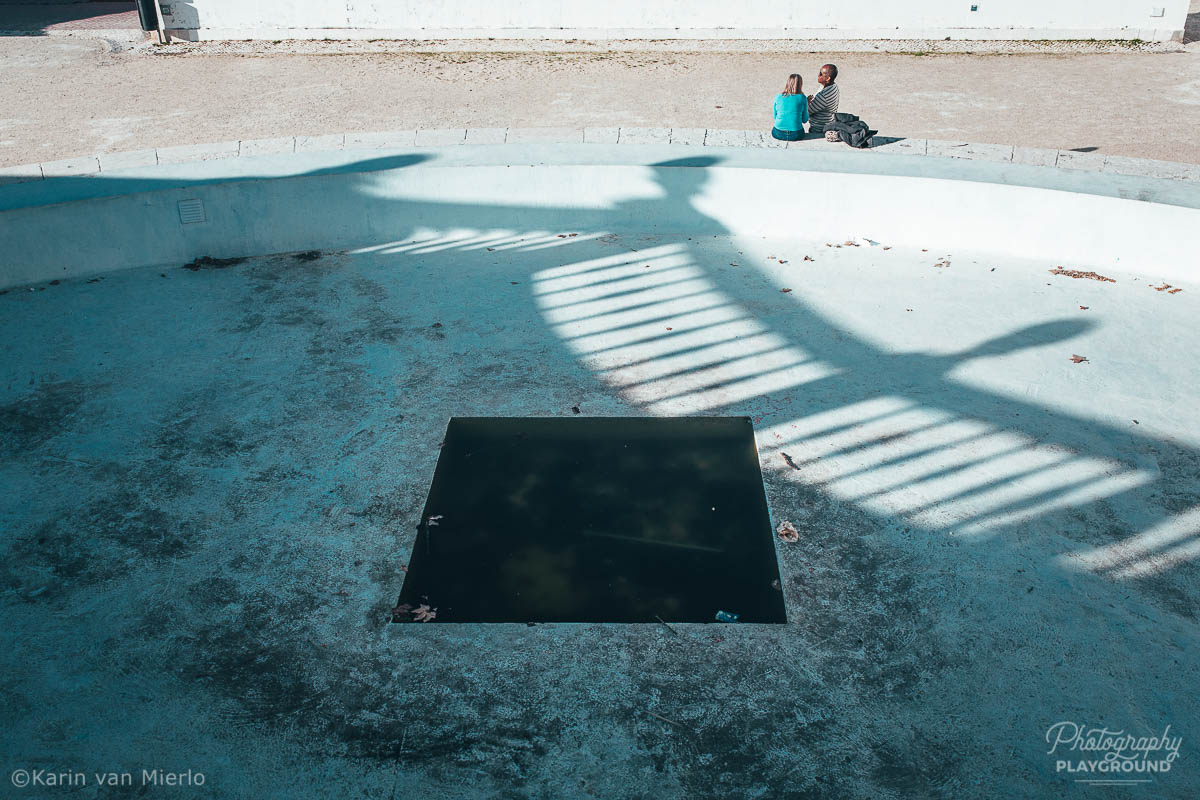
Canon DSLR Camera, Full Frame, 35 mm. Lens
#3 Type of Camera?
Nowadays there are two types of digital cameras: DSLR and Mirrorless. To be clear there are more of course but I’m not going into that. In this article, I want to focus on cameras with manual control options and interchangeable lenses.
DSLR Cameras
Okay, so what is a DSLR camera? It stands for Digital Single-Lens Reflex.
It has a mirror inside to allow you to see the scene when you look through the viewfinder.
The mirror creates an optical image of what’s going on in front of you.
The moment you press the shutter the mirror swings up exposing the sensor to record the image.
Mirrorless Cameras
And that should tell you something about the difference between a DSLR and a Mirrorless camera.
Surprise, surprise, a Mirrorless camera doesn’t have a mirror.
It has a different system to show you the scene while you’re looking through the viewfinder.
It shows you a digital image of the scene in front of the camera.
Why Should You Care?
This is the biggest difference between the 2 systems but that doesn’t tell you anything. What do you care about how the image you see is constructed. I get it you don’t, not really!
But I’m sure you do care about things like size, weight, and speed.
Due to the way a dslr camera is constructed, it’s bigger and heavier than a Mirrorless. It’s also faster, more robust, powerful, and durable.
So those are things to consider.
Mirrorless cameras are the future of photography but it is an area in photography that is still very much in development.
I really want you to take a moment to think this step through. Because you’re at a crossroads here and that’s why it’s the most important decision you’ll make. It determines all your options further down the road.
DSLR and Mirrorless are 2 fundamentally different systems. If you buy a Mirrorless you won’t be able to borrow that awesome lens from your friend who has a DSLR. You cannot mix and match across the 2 systems. Once you’ve chosen you’re stuck with it.
So you see why this is a vital step that you need to think about. Keep an open mind for both systems. They both have pros and cons but nowadays they are similar in overall quality within the same price range.
The bottom line is that you choose a camera that matches YOU.
#4 Which Features Are Important?
We’re getting into the nitty-gritty details of your future best friend now. This is usually the moment most first-time camera buyers get overwhelmed.
Once you’ve selected your price range on a camera website a bunch of different cameras pop up.
And they come with descriptions like Sony Mirrorless Camera (24MP) with 15-45mm, F3.5-5.6, IS, Starter Kit.
If you’re like most people this doesn’t tell you anything remotely helpful. So let me clear that up for you.
Sensor
The first thing of importance is the sensor. That is where a lot of the magic happens if not all of it. The sensor is the part of the camera that records your picture. It’s the same thing as the film in the old days.
Two things are important when it comes to the sensor and that is its size and amount of pixels it contains. You might think those are related but that’s not always the whole story.
Full Frame vs Cropped
As far as size goes there are 2 different sizes. We distinguish a full frame sensor and a cropped sensor.
A full frame sensor is like the Single-Lens Reflex camera itself, a heritage from the analog days of photography. It’s nothing more than the dimensions of the analog film which was 35 mm.
A cropped sensor is simply smaller than that.
Why should you care?
The size of the sensor determines the focal length of the lens.
To get the same angle of view you need different focal lengths.
For instance, a 35mm focal length on a full-frame sensor gives the same angle of view as a 23mm focal length creates on a cropped sensor.
There doesn’t have to be a difference in quality between the 2 systems. A cropped sensor can give you the same image quality a full-frame can give you.
Pixels
The amount of pixels determines the final image quality of the file. But I don’t want you to worry about that. Even the simplest camera has a good number of pixels nowadays. And this only comes into play when you want to print your pictures in a large format.
The amount of pixels is measured in MegaPixels or MP. Anything around 20MP or above is a perfect number.
Raw
You also want to pay attention to the ability to shoot in Raw. A Raw file stores more data than a Jpeg file. Maybe, for now, this is not something that interests you but I can assure a little bit down the road it probably will.
Why should you care?
Shooting in Raw makes all the difference because it expands your options in the post-processing phase tremendously. And that’s why it’s important to make sure your new camera has that option.
Check this out to find out more about Raw vs Jpeg.
Manual Mode
As with Raw most cameras nowadays have the option of shooting in Manual Mode.
But not all roads to Manual Mode are created equal.
This should be a 2-step process. The shutter speed and aperture settings each should have its designated button independent of each other.
Why should you care?
Maybe shooting in Manual feels like this mystical skill to you now but once you get a taste of what you and your camera are capable of together you’re gonna want to discover how to expose manually. If moving away from auto mode interests you go here.
And having a designated button to both shutter speed and aperture makes it not only easier to shoot in manual mode but also quicker.
Image Stabilization (IS)
IS stands for Image Stabilization and is an awesome technique that reduces the blurriness of camera shake. IS allows you to shoot with slower shutter speeds because it has some technical stuff inside that stabilizes the camera when you press the shutter.
Why should you care?
In low light situations, it’s a good thing to be able to shoot with a slower shutter speed. But also when you’re shooting with a telephoto lens it’s a good thing to have. Because a telephoto lens is heavy it creates camera shake quite quickly. With Image Stabilization, this camera shake is reduced.
ISO Range
The ISO range is also an important spec to check. The ISO setting determines the light sensitivity of the sensor.
In most cameras, the lowest ISO setting is 100. Nothing to get excited about as it’s the same in every camera but it’s the other end of the spectrum you should be interested in.
Because the higher that number the more sensitive to light the sensor is. It can go up to values like 12800.
Why should you care?
It’s easier to photograph in low light situations. If that is important to you because you love to follow around your favorite band pay attention to the ISO Range in the list of specs.
Sensor Cleaning
Another thing I want you to pay attention to is the option of automatic sensor cleaning.
I have it in both my cameras (Canon and Fujifilm) and I’m telling you it makes all the difference! The camera I had before didn’t have automatic sensor cleaning which meant I had to clean the sensor myself.
That’s not a problem in itself but the thing is you keep shooting until you actually discover spots and dust on your computer. And then it’s too late.
If you do discover dust in your files check out 5 Easy Steps to Quick and Safe Camera Sensor Cleaning.
Why should you care?
Every time you turn on your camera the sensor gets cleaned leaving it spotless for you to create your magic. You no longer have to spend hours cleaning up a file in post-processing.
Specs you don’t need to care about.
Frames per Second
Unless you have ambitions to become a sports photographer things like frames per second are not important. I mean even your smartphone can shoot a couple of frames per second. Any entry-level camera can do the same.
Focus Points
Another thing camera manufacturers like to differentiate themselves with is the number of focus points in the viewfinder. But, honestly? That’s boring stuff. Who needs 72 focus points? Right, nobody. Not something you want to focus on too much.
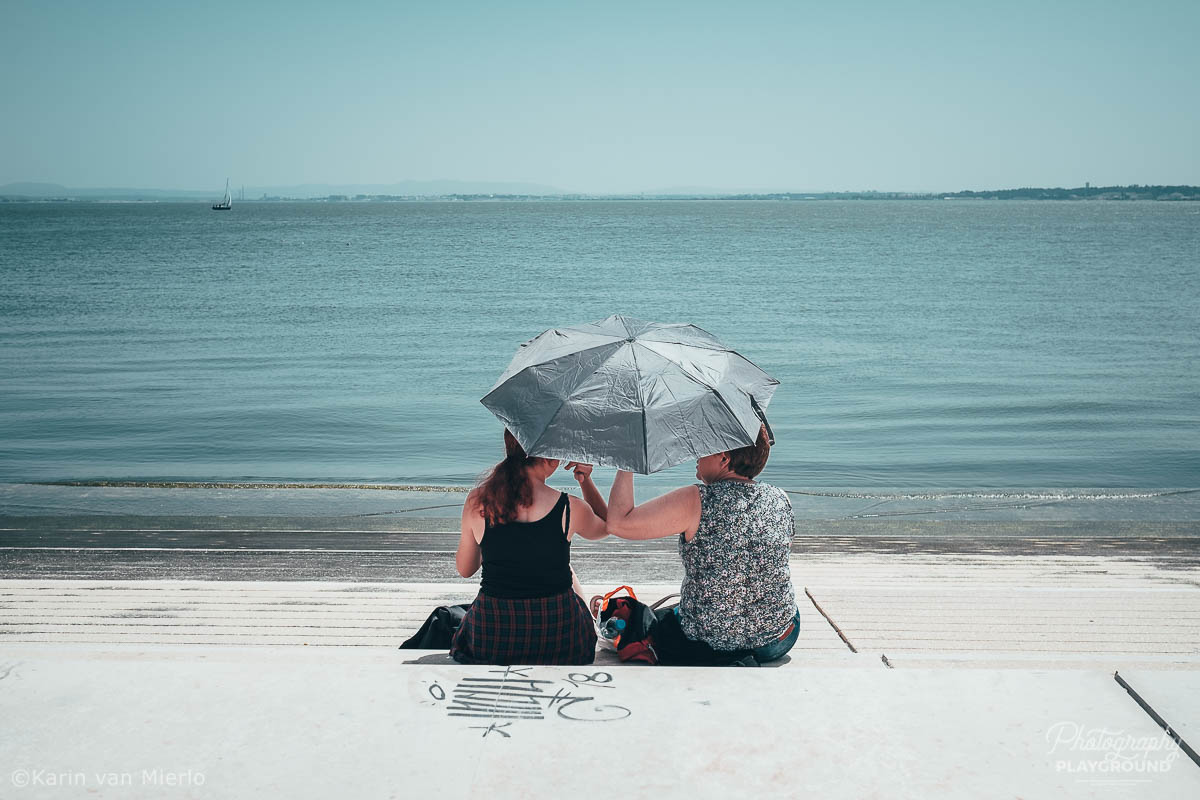
Fujifilm Mirrorless camera, Cropped, 23 mm. Lens
#5 Which Lens Do You Need?
Lenses are more important than the camera. Most people don’t realize it but your kit is as good as its lens.
Kit Lens
Most entry-level camera kits come with a zoom lens and the manufacturer makes a nice price for the combo. It’s cheaper than buying the camera and lens separately.
It’s for sure a good way to get your toes in the water because you get a lot for a very reasonable price. But you do have to realize that these kit lenses are on the lower end of the quality scale.
It might be worth it to save a little more and buy a camera body and a better lens separately.
Then you can choose the lens depending on your needs and not on what the camera manufacturer dictates you.
Things to care about in lenses
The first thing you need to decide on when you’re shopping for lenses is if you want a zoom lens or a prime lens.
Zoom vs Prime
With a zoom lens, you have different focal lengths in one lens and a prime lens has a fixed focal length.
Shooting with a zoom lens can be great because you only need to carry around one lens and you don’t need to change lenses all the time.
But this convenience comes at a cost. The quality of zoom lenses is lower than the quality of prime lenses.
The focal length of a lens is measured in millimeters. For instance, a telephoto lens has a focal length of 200 mm and a wide-angle lens has a focal length of 24 mm. For a zoom lens, it will describe the reach of the zoom. For instance, 15 – 45 mm.
Read More: Prime vs Zoom Lens: The Ultimate Guide to Help You Decide
Aperture
Aperture is the opening inside the lens. You can close it to the size of a pin and open it as wide as your pinky finger.
As you can imagine the wider the opening the more light falls on the sensor.
If a lens has a very wide maximum opening it means it can still photograph in situations when there’s not a lot of light available.
Aperture is measured in F-Stops. For instance, a wide aperture is F1.8 and a small aperture is F11.
Subjects
Lenses give a very different look and feel to your image. You choose a lens depending on the kind of subjects you love to photograph regularly.
In general, you use a telephoto lens for portrait photography, wildlife photography, and sports photography.
And a wide-angle lens for documentary photography, landscape photography, and street photography.
#6 How About Your Research?
At this point, you have the knowledge to dive down the rabbit hole of camera websites and understand what you’re reading. Hooray to you!
So that’s your next step. We’re done with the questions. Now go and do your research.
Getting into the specifications is something you should do online because you can easily compare a few cameras side by side without having a salesperson looking over your shoulder.
A very important step in this phase is to look for reviews. Once you’ve narrowed it down to a few favorites you should find out what other people are saying about the camera. There are 2 ways to go about this.
Consumer Reviews
First, you can look for reviews on Amazon. These are consumer reviews and will give more personal experiences with the camera.
Expert Reviews
But the more unbiased information will come from review websites. Websites that make a living by reviewing cameras.
They are very thorough in their testing and will give a lot of detail about the camera.
I find it best to compare the different cameras on the same review website if that’s possible of course. Not every review site will have a review of all the cameras you’d like to compare. But it makes the comparison easier because they usually put the cameras through the same testing process.
I like Shotkit but there are others out there.
The only thing you need to do is type in the brand and model in your browser followed by ‘review’ and the current year. This way you can be sure google only shows you recent reviews.
#7 Are You Ready To Meet Her?
By now you’ve put in a lot of work to discover which camera is the right fit for you. But you cannot go through with buying a camera before you take this last extremely vital step.
Go to a camera store and spend an afternoon of speed dating your possible new cameras.
You’ve narrowed it down to a few options. The specifications and prices are more or less the same.
Ergonomics are Important
What will make the difference in your final decision is how it feels in your hands. The ergonomics of the thing. The intuitive feeling when searching for buttons and navigating the menu. The weight, the size, and how it fits your eye are also things to consider.
Basically, how does the camera make you feel? Are you falling in love with her? Which one makes your heart sing? These are the intangible things that will help you decide. Because it’s not only about features and specifications. This is your brand new best friend. You want to feel something for her.
And then buy it, right there in the store. Don’t go home to order it online to save a few bucks. For one to support your local economy and shop owners. But also because it’s good to have a physical place to go to when something is wrong or you have a question.
#8 Anything Else?
Well, you’ll need a couple of other things to get started. You can go crazy with accessories but most of them fall into the nice to have category.
The only thing you can’t go without is a memory card. Preferably 2 so you can change when one is full when you’re out in the woods.
A spare battery is in my opinion also a need to have accessory. You don’t want to run out of battery while you’re out and about.
A camera bag to protect your camera is very important especially when you like to travel. More photography safety tips in this article.
Depending on the type of memory card and the card slot on your computer you will need a card reader as well.
Insurance
Getting your camera insured is up to you.
But you do need to consider that regular consumer insurance for electronics is based on current market value.
So when your camera gets stolen you’ll get the value of the camera on the day it gets stolen. Not the sum you paid for it.
For the first year for a brand new camera, it might make sense to insure it but a few years down the road not so much anymore because the value has gone down considerably.
That’s it! Your roadmap to buying your first camera. Congratulations! Let me know which camera you’re gonna buy in the comments.
Did you get yourself a brand new camera? Share your photos on Instagram and mention @photography-playground!

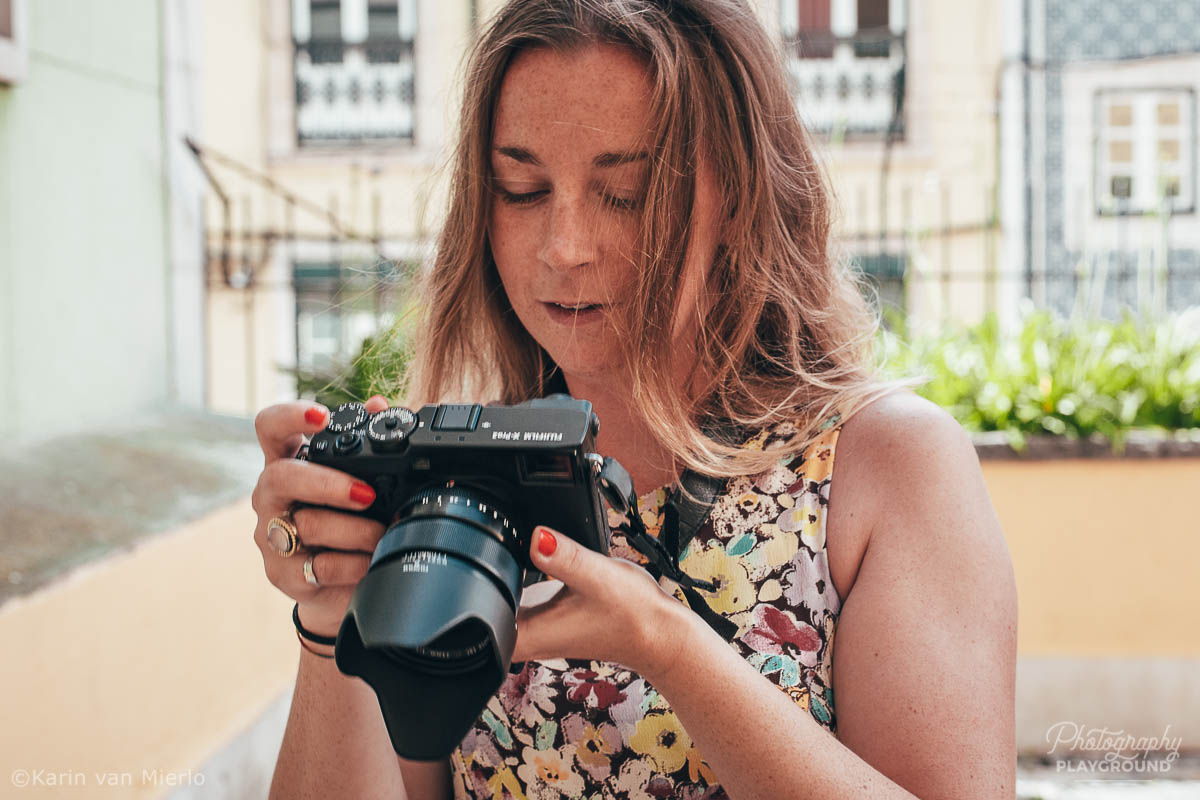
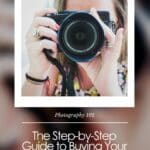
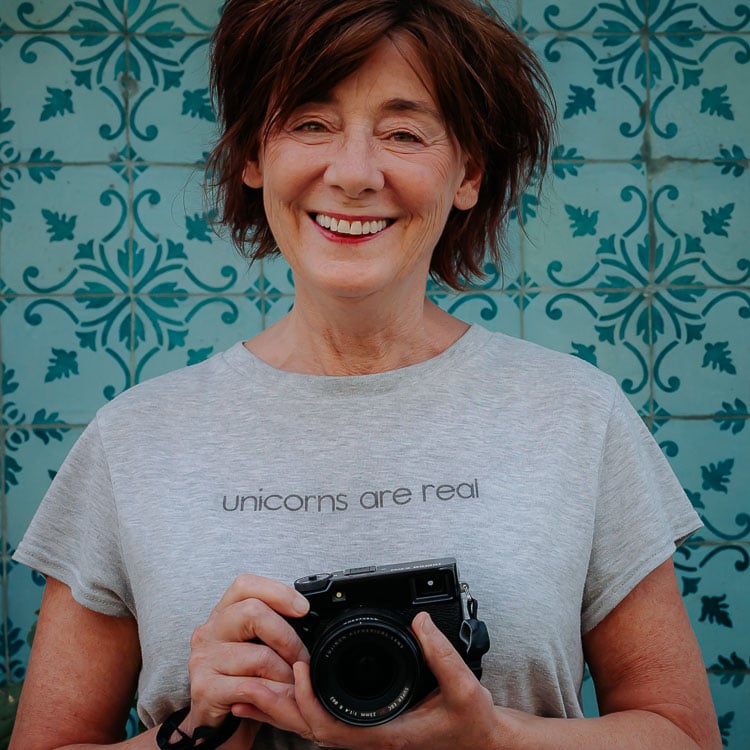
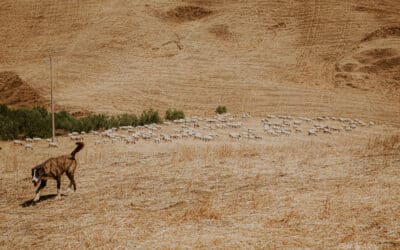
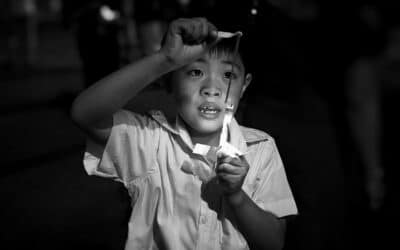

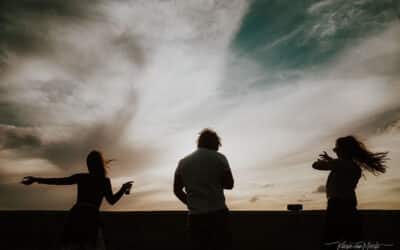


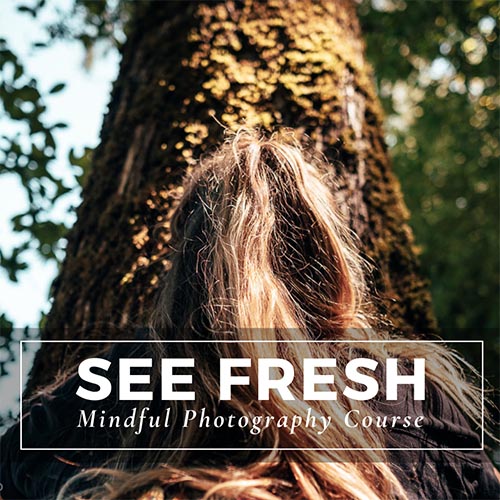
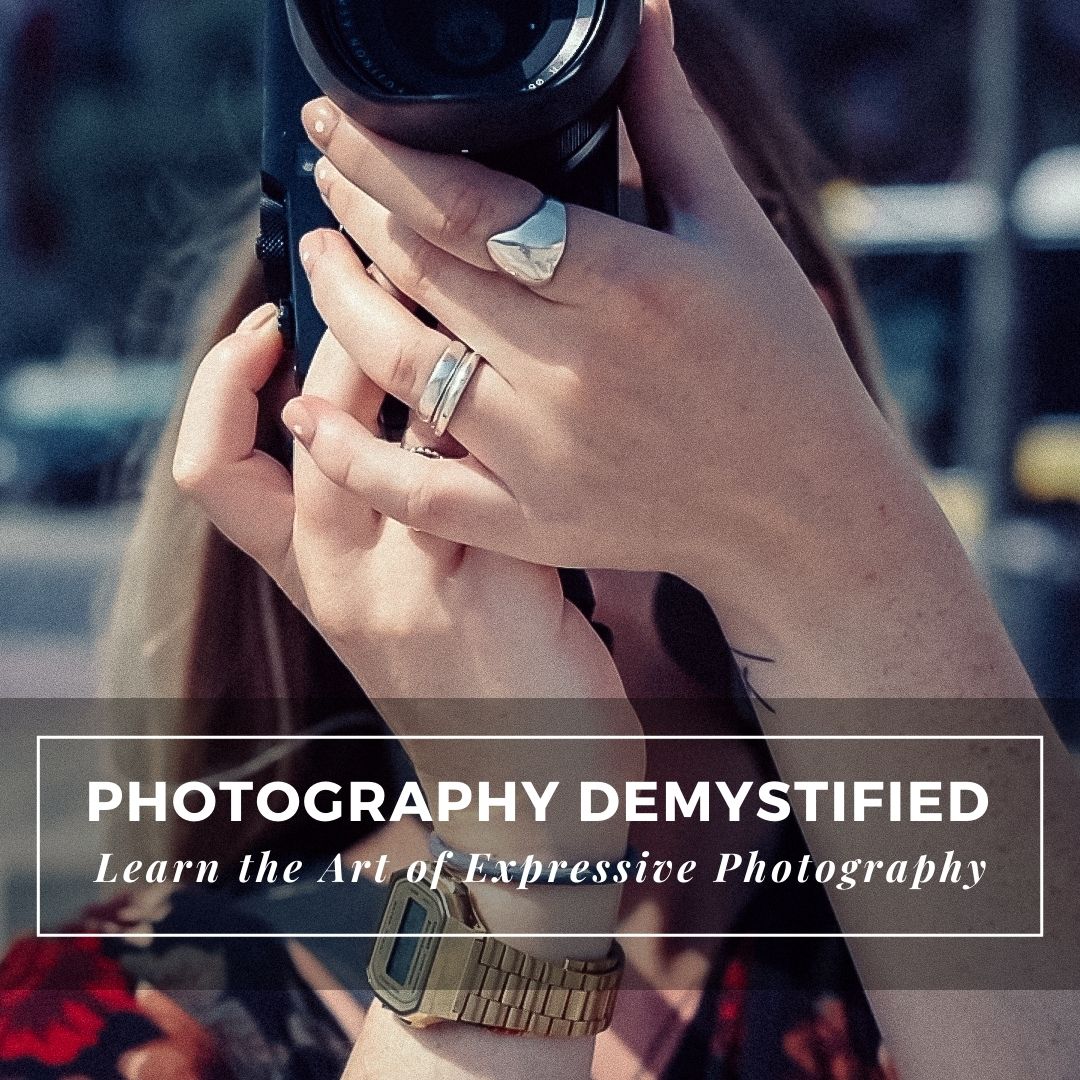

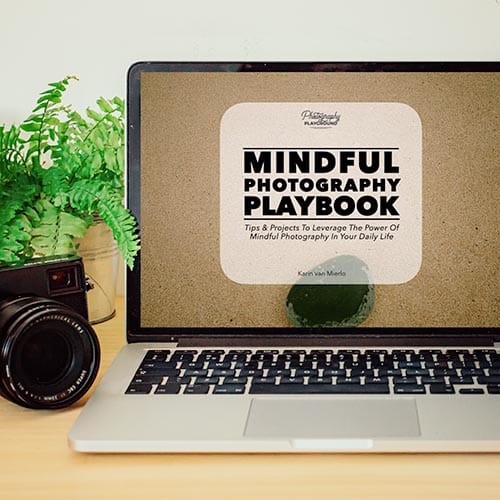
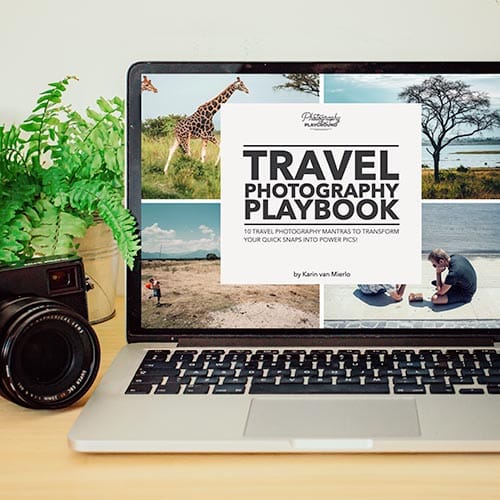
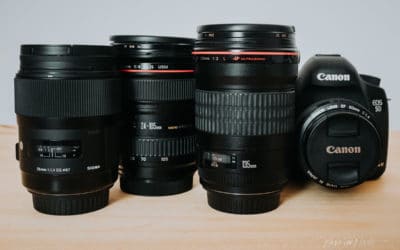
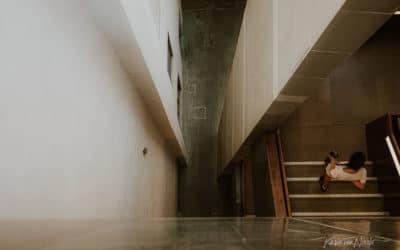
Your article solves a lot of conflicts that tap into my mind. I want to buy a camera for a long time. but some confusions always restrict me to buy my 1st camera. Thanks for your helpful blog. Really appreciate you.
Thank you, happy you find it helpful 🙂
I really enjoyed reading your post on how to choose a camera. I’m glad you included a link to your blog post, too. I was also pleased to see that you included links to other articles on your site. I think you did a great job of breaking down the process of choosing a camera and I could really relate to it. I also liked the links to your other articles because it was helpful to see where your other interests lie.
Thank you 🙂 Glad you liked it and found it helpful.
Great post. Thanks so much for sharing!
I’m a regular reader of this site for last 1 month. All your articles are superb and I like to thank you for your effort to help other….
Thank you! Happy you think it’s helpful 🙂
“a 35mm focal length on a full-frame sensor gives the same angle of view as a 23mm focal length creates on a cropped sensor. ”
Isn’t it the contrary? My 55-200 zoom gives 82-300 angle of view in my APS-C sensor. ( 1.5 crop factor, Nikon D3300 ) And a 12-200 becomes a 24-400 in, say, Olympus Micro 4/3 sensor, crop factor 2…
Hi Javier, I know it can be a bit confusing with different cameras having different crop factors. But one thing I know for sure is that my 35 mm on my full-frame Canon the same angle of view has as my 23 mm on my cropped Fujifilm camera. Hope this helps 🙂
Hi Rachel, thank you so much for such a simple but more comprehensive post. I am looking for a camera, I’ve never owned one and really it’s a heck of time if I can say…. your post is very helpful.
Hi Terri, Karin here 🙂 Thank you, glad you found it helpful.
Under MANUAL MODE/Why Should You Care, what does this statement mean?
And having a designated button to both shutter speed and aperture makes it not only easier to shoot in manual mode but also quicker.
Does it mean one button that does these two things or does it mean two separate buttons, one for each?
Thanks for a helpful article!
Hi Elaine,
That’s an excellent question! I mean one button for shutter speed and one button for aperture. So two separate buttons.
Glad you liked the article 🙂